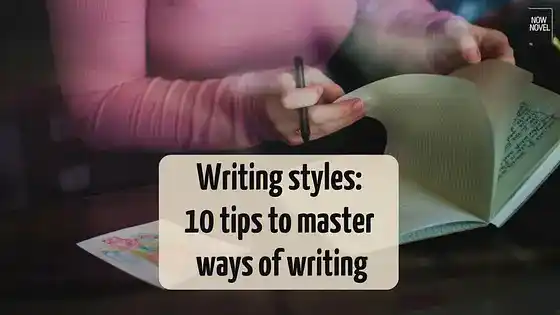Navigate your
writing journey
Learn how to successfully publish your book.
Learn how to successfully publish your book.
From Anna Karenina to Jon Snow, Don Quixote to Harry Potter, famous characters from fiction worm their way under our skin. Here are lessons from several memorable characters in classic and modern novels: 1. Give characters internal and external conflicts Most famous characters from books h...
August 21st, 2017
Read post...
This is a guest contribution by publishing network Reedsy, a succinct guide to working with a book editor. If you're not quite at the editing and publishing stage yet, join Now Novel for help planning and finishing your novel. How many editors does it take to change a light bu...
August 10th, 2017
Read post...A good plot twist adds intrigue, suspense or surprise to a novel. Plot twists are particularly popular in suspense-heavy novels such as murder mysteries, because they prolong suspense-creating questions about cause and identity. Read 7 examples of effective plot twists and what they teach us: ...
August 7th, 2017
Read post...Developing the story content of your writing – your characters, plots, dialogue and other areas – is important. Yet mastering different writing styles is equally important if you want to convey your story to readers with creative precision. Read 10 tips for developing and mastering your language...
August 3rd, 2017
Read post...
The structure of a novel is important because it contributes to the clarity and flow of your story. Chapter structure is satisfying when the beginning, development and end contribute equally to the whole. Read 7 tips to write well-structured chapters, including examples from great fiction: Fi...
July 20th, 2017
Read post...What is a subplot? It's a secondary plot in a novel, play or movie. Subplots are the additional minor arcs that help develop characters, themes and settings. Read 5 tips for writing subplots, including useful examples of subplots from books: First, why use subplots? The main story arc in a...
July 17th, 2017
Read post...Writing romantic scenes between lovers and writing fight scenes (between lovers or heroes and villains) might sound miles apart. Yet both share common important elements: 1. Structure (shape, purpose, clarity and direction) There are four things great scenes of all types (not only ro...
July 13th, 2017
Read post...There are endless ways to describe someone, from physical description to verbal tics, personal views and more. Here are 10 questions to ask about your description words to help you make your writing vivid: 1: What are the most precise, descriptive nouns? Often when we think of description ...
July 3rd, 2017
Read post...What is foreshadowing? Generally, the term means a 'warning or indication (of a future event)' (OED). As a literary term, it means creating earlier scenes to build suspense, anticipation or understanding ahead of later plot developments. Learning how to foreshadow is a useful skill for creating ...
June 29th, 2017
Read post...
'Action' and 'pacing' are two crucial elements in all stories, particularly in action/adventure and mystery/thriller novels. Knowing how to write action well keeps your tale engaging and fun. Here are 8 tips to help you pace your action story: How to write action better: Understand strong...
June 26th, 2017
Read post...
Character profile writing is a useful way to build a rounded idea of your characters. Knowing your characters' appearance and persona inside out makes scenes practically write themselves, sometimes, when you bring characters together. To create a character profile, ask these 5 questions and writ...
June 15th, 2017
Read post...Describing hands is useful for showing characters' psychological traits and personality, age and more. Many amateur writers stop at describing eye colour or how characters say their dialogue. Yet there are many different physical details you can use to show a character's nature. Read exampl...
June 12th, 2017
Read post...We made a writing app for you
Yes, you! Write. Format. Export for ebook and print. All for free.












